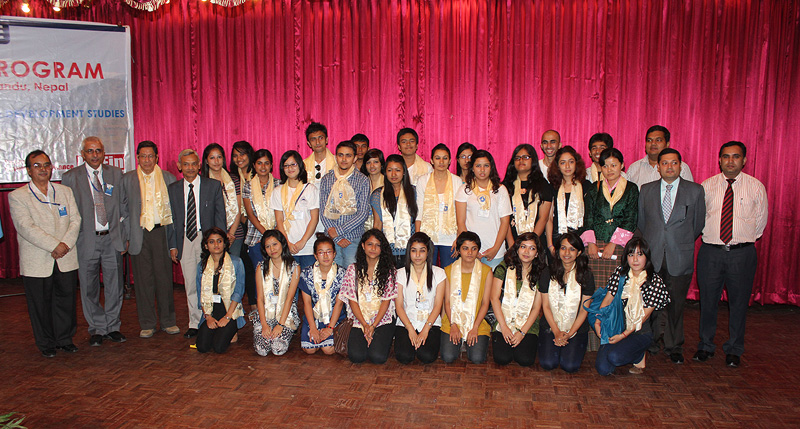The speech of the SAARC Secretary General
A very good morning to all of you!
I am pleased to be invited to this function organized to welcome the new students pursuing the Bachelor’s Degrees in Development Studies and Development Finance at the National College of Kathmandu University, some of whom, I understand, are from the South Asian Countries and are covered under the South Asia Foundation Madanjeet scholarships. It is all the more a pleasure for me to be speaking before this mass of students for the first time since assuming office as the Secretary-General of the South Asian Association for Regional Cooperation (SAARC) in March this year.
Distinguished guests and dear students,
Established in December 1985, SAARC provides a platform for the peoples of South Asia to work together in a spirit of friendship, trust and understanding in order to promote the welfare of the peoples of South Asia; to accelerate economic growth, social progress and cultural development in the region; and to provide all individuals the opportunity to live in dignity and to realize their full potentials.
Since its inception, SAARC has been cognizant of the important role of youth and education in developing human capital in the region. The Association also recognizes that economic and social development cannot be achieved without the optimum utilization of human resources for which education is a prerequisite.
With this premise in mind, SAARC has taken several initiatives to promote human capital through education. One of the major steps taken by the Association in this direction is the establishment of the South Asian University, which is based in New Delhi and is operational since August 2010. As a Centre of Excellence, the University provides world class facilities and professional faculty to students and researchers drawn from the region. Another such initiative is the SAARC Chair, Fellowship and Scholarship Scheme instituted in 1987, which aims at providing increased cross-fertilization of ideas through greater interaction among students, scholars and academics in the SAARC countries. Likewise, a Committee of the Heads of University Grants Commission is actively pursuing the objective of Mutual Recognition of Professional Degrees awarded by the Charted Universities of SAARC Member States, besides promoting the goal of Common Regional Education Standard in the region.
Dear Students,
Issues related to Youth in the region have also been given due priority by SAARC. Among other things, instituted in 1996, the SAARC Youth Awards Scheme aims at encouraging the South Asian youth to excel in various fields and to realize their full potential. Open to nationals of SAARC Member States within the age group of 20 to 35 years, the Award has so far been granted to nine South Asian youths for their extraordinary achievements in different fields.
Beyond official linkages, SAARC also encourages interface and cooperation with the civil society of South Asia. In pursuit of this objective, a number of professional bodies have been recognized by SAARC as its Apex and Recognized Bodies. One of these Bodies is the South Asia Foundation (SAF) which enjoys an Apex Body status with SAARC. Among other things, the Foundation has been promoting people to people contact through various activities, including through scholarships awarded to South Asian students to pursue higher education in all the SAARC countries, including Nepal, some of whom are present with us this morning.
Before I conclude, I wish all the students a rewarding academic career at the Kathmandu University.
I thank you.














 Read more about "SAARC"...
Read more about "SAARC"... 